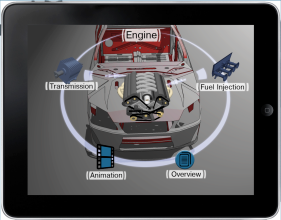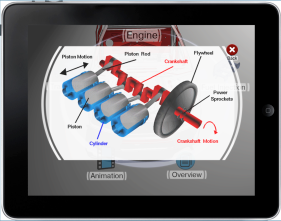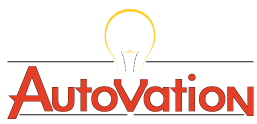The CMDC Program at Washington State University Vancouver (WSUV) is embarking on an exciting project with local partners.
This project will delve into:
(1) Digital Installation for a
Science Museum
(2) Interactive Augmented Reality
Technology
(3) A History of Automotive
Innovation Exhibit
(1) Digital Installation for a
Science Museum
(2) Interactive Augmented Reality
Technology
(3) A History of Automotive
Innovation Exhibit
Project Video
This video illustrates the way in which the Autovation exhibit will be displayed and its interface will work when a tablet or smartphone is pointed at different hotspots on the unibody of the car.
Research Question
How do you build an interactive, augmented reality installation that explores the history of automotive innovation with enough breadth so that it retains its immersive quality and yet still educates the audience beyond the standard constraints of current exhibit installations?
Project Goals
(1) Create a digital installation that will explore the history of automotive innovation.
(2) Experiment with new techniques in the pedagogy of museum exhibits.
(3) Push the envelope for how augmented reality technology can be applied to new fields of study.
Methodology
Using an iterative design process, with input from Oregon Museum of Science and Industry (OMSI) and Dick Hannah Dealerships, we are developing “Autovation,” an interactive augmented reality environment about innovative car technology. To create this project, we have researched over 100 design ideas involving digital media installations from across the world in fields such as art, education, business, and science. Ideas that best related to the audience and exhibit goals were selected and expanded upon. As augmented reality became the front-runner of technologies for further exploration, the project goals were narrowed to analyze the applications of the emerging technological medium.
The project's research and design methodology focused on rapid prototyping, iterative and user-centered design, and pervasive usability. Successive prototypes for the installation were developed with the content designed around the audience—in this case, a young crowd accompanied by adults. Critical analysis of the prototypes allowed for further refinement of the installation and its content, allowing us to then create more narrowly defined prototypes. Since technologies of automobiles and computer software are always changing, we must remember to leave room for future iterations of the project to be easily inserted and assimilated throughout the project.
Ultimately, the project is going to entail a car unibody angled above the ground with the tail end rising up over seven feet. On the car body, we will place three interest points that will prompt devices running Junaio, the augmented reality reader for Metaio. This will display the inner workings of the automobile, communicating through animation, graphics, hypertext and 3D models. Three dedicated tablets will be installed on mounts that allow for access to the technology for visitors. Programs used to develop this exhibit include Unity, Metaio, Objective C, and Xcode.


Preliminary Findings
We have found several unique qualities of augmented reality for exhibit installations:
Depth - augmented reality allows for additional dimensions of content to be layered over the display. As such, a great deal of content may be placed within the environment, allowing for a greater range of affordances than one would find in a standard interactive installation.
Interactivity - The hands on nature of the exhibit allows for digital kinesthetic learning. The physical nature of the interface allows the user to experience a tactical modality, which is often underdeveloped in digital content. At the other end of the spectrum, the digital content is able to provide a level of virtual interactivity that cannot otherwise be experienced.
Immersion - the digital, virtuality of the technology simulates a new reality. By augmenting a physical object with digital content, the installation may present much more verisimilitude and suspension of disbelief than a purely digital interface.





